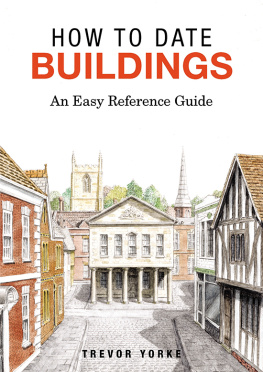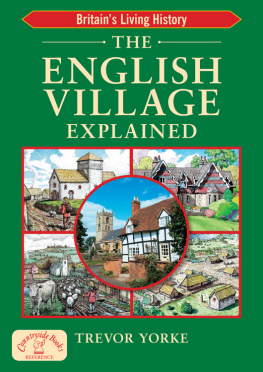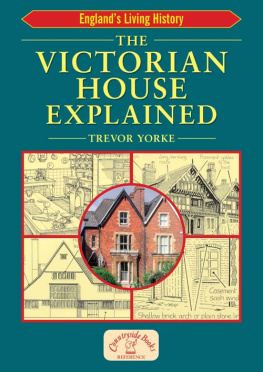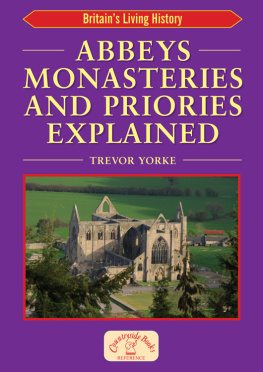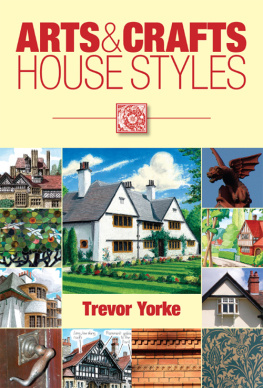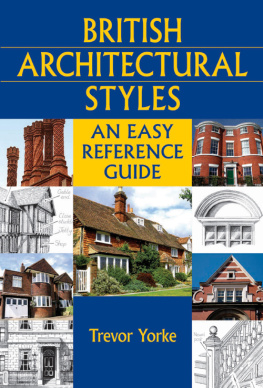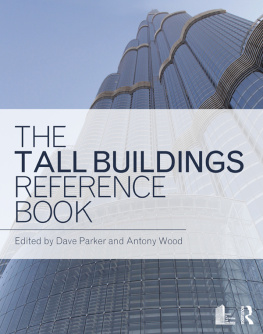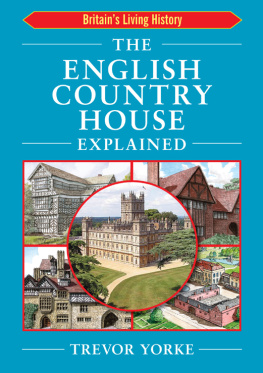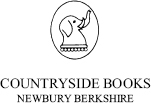All rights reserved. No part of this publication may be reproduced,
stored in a retrieval system, or transmitted by any means, electronic,
mechanical, photocopying, recording or otherwise, without the prior
written permission of the copyright holder and publishers.
O ur old buildings which proudly stand in Britains cities, towns and villages are a fascinating link with the past. These structures give our communities a reassuring permanence, an historic value, and evoke an emotional response. From a humble black and white Tudor cottage to a colourful Victorian town hall, their contorted timbers, patterned brickwork or rustic masonry inspire investigation and query. We wonder about the lives of the different people who have walked through their doors over the centuries. We consider what historic events might have been witnessed from their windows. However, the first question before all others can be put in context must be, How old is the building?.
There is lots of crucial information to help in dating an historic building, once you know the clues to look out for. The buildings location, its form, the materials used and the type of windows and doors fitted can all help to narrow down the period. By recognising these dateable features, you can then start piecing together its history, understanding how the building has developed over time, and something of the lives of the people who once lived within its walls.
This easy reference guide, with its many photographs and captions, leads you through the various points to examine, in order to narrow down the construction date. There are illustrated examples of some notable buildings, with their background history and the details which help to date them. A glossary helps with any unfamiliar vocabulary.
Soon the buildings around you will no longer be just bricks and mortar. As you learn to read their dateable details, history will come alive. By being able to associate the shape of a roof, the bonding of the bricks, and the moulding above the door with a certain period, you will be able to unlock the past. You can then enjoy the thrill of understanding how their various owners over the centuries, have shaped and altered the house to meet their needs and the changes in architectural fashion.
Trevor Yorke
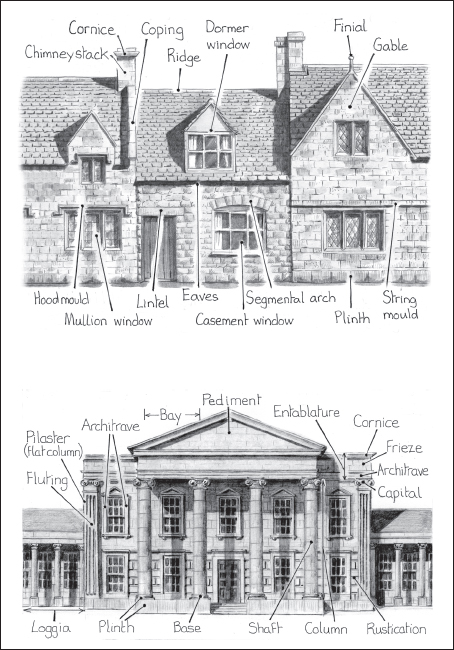
B ritains old buildings come in all shapes and sizes, constructed from a wide variety of materials and with original details dating back, in a few cases, over a thousand years. While some buildings are vernacular, built by local craftsman in regional styles with materials found close at hand, others were designed by fashionable architects and reflected that periods trends in architecture. Dating a building can be particularly challenging when the builder has borrowed styles from an earlier period, this was particularly the case in the 19th century.
Victorians were heavily influenced by the Gothic architecture of the Medieval period, they also looked to 16th and 17th century buildings for inspiration. The revival styles they created were so close to the original that they can sometimes be hard to tell apart.
To further complicate the matter, an architectural fashion could take up to fifty years to permeate across the country. While builders in important urban locations were under pressure to use the latest styles in order to remain competitive, a builder in a small town may not have felt the same need to change the style they were comfortable with and had used throughout their career. As a result, there can be a difference of many decades between similar style buildings, and this has to be taken into account when dating buildings.
Underlying these sometimes confusing styles, are certain structures and fittings that are unique to a particular period. Decorative details can also help to pinpoint the time of construction and piece together the history of a building. Being able to recognise these details will be the focus of this book.
When studying a building, it is important to work from the whole to the part. In other words, first step back and look at its surroundings, before considering its particular architectural details. Is the street an old route, or one laid out in recent times? Is it close to a railway station, canal or factory, and hence the building could date from the period when these arrived? Is the ground level of the building lower than the road in front? Assuming the area is flat, then as roads are built up over the centuries this would indicate that the structure is very old. Is the building set upon one of a series of long, narrow plots in the older part of a town? These are medieval land divisions and the present building may have old foundations or a basement.

FIG 0.1: The ground levelaround an old building will tend to rise as gardens are worked and roads have new surfaces added. A doorway approached down steps or a window below ground level can indicate that the building is centuries old.
As you move on to study the building in closer detail, look at the walls for signs of change. A vertical break where the masonry or brick does not line up and is not bonded together, indicates that one period of building had finished and a later one begun. Look to see if the horizontal lines are sagging slightly, or if windows are not neatly lined up. Old timber framed buildings were unfashionable in the Georgian period and were often refaced or covered in render. If possible, look down the sides or rear, as this is where the original building is often revealed and signs of later extensions and changes will be exposed. This can be key in establishing the development of the building, and which parts are the oldest.
The general condition of the materials it is built from is an invaluable indicator of its age. Worn masonry, crumbling brickwork and weathered timbers show their age, just as sharp-edged walls and clean surfaces appear modern. Although this will often help in dating a building it should not be used as a definite rule. The Victorians were very ruthless when restoring old buildings and cut medieval stone back. Also pollution and frost can make certain materials used by the Victorians now seem centuries old. It is also worth bearing in mind that ruined structures were raided in the past to supply materials for new buildings. The Saxons reused Roman bricks in their churches, while numerous buildings close to old abbeys and castles were constructed with large pieces of masonry taken from these ruins.

